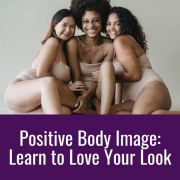National Donut Day
National Donut Day (GET HELP) isn’t very exciting for those with eating disorders…
Story by Meaghan:
I want to tell you about this guy that I met. I’m not going to use any names because I feel it could really ruin someones reputation. Him and I met about ten years ago. You could say that our relationship has been pretty serious, always ups and downs but when push comes to shove he really has always been there for me. I was a freshman when we met, he has taught me so much about life, love and happiness. He taught me about strength and persistence. He taught me how to love myself, even when I wasn’t very lovable. He taught me self-care, taking time for myself. Throughout high school we had lunch together almost every single day. Once we went to college, things got kind of complicated you could say. I wanted to be alone and figure myself out, and he wanted to support me. I’d push him away and then call him back whenever I needed him. He comforted me when I was scared. He guided me when I felt I couldn’t make decisions and always gave me the greatest advice. He’d constantly show me who my real friends are and push away every negative person that got in my way.
He’s great, he’d go shopping with me, out to eat, parties and even take me on little vacations. He’s perfect right? The only thing is he insisted that we kept our relationship top secret. However I was treated like a princess, so it was worth it. Wouldn’t you kill for a relationship like that? Having a man that stands by your side for ten years even if it’s just in the role of a friend. Someone who is honest, who fights for you, who is patient and waits for you to discover yourself? Someone who is willing to wait for you and as soon as you are ready, he’s back, like nothing ever changed.
How lucky am I? I’d say very. I found my Prince Charming at such a young age and the best part is I knew he’d never, ever leave me. No matter how poorly I treated him. No matter how stubborn I was. No matter how many other relationships I got into, I always knew he’d be there. He would never let me be lonely. It’s a dream come true.
There’s a flip side though. This guy, as much of a dream that he is also did some pretty terrible stuff to me. Do I keep him or do I let him go? That’s where I need your help.
When I say he taught me how to love myself, I mean- he told me what I needed to do to be beautiful. Make-up, hair-dye, tanning, gym memberships, and the latest ‘diet’ trends. When I was scared he’d teach me control, like “If you ever want to get anywhere in you life you have to learn to punish yourself when you do wrong.” When I was getting dressed he’d tell me I’m ugly, and that clothes will never ever fit me. If I had a friend or a significant other he’d find ways to push them away because the only love I needed was his. He’d help my avoid awkward social gatherings and fight with my loved ones so I could ensure keeping him around. He HATED seeing me in dresses, it just wasn’t a pretty site. He’d comment on how my calves were too big and my thighs shouldn’t touch. He’d convince me that no one loved me, no one cared. Whenever I was alone he’d keep me company. Whenever I was with people he would always be right.there.
He made me sick. I never wanted to leave my house, I couldn’t work, I couldn’t sleep. I was scared and nervous, I couldn’t make a move without him noticing. I wasn’t allowed to cry, or be angry, or be anything but “happy.” If I felt anything else, he’d become enraged, he wouldn’t leave me alone. he convinced me that I’m not worthy. I was fat. I was ugly and he always had to be number one in my life. He gave me what I wanted, attention. He was manipulative, he made me cling to love. He was intimidating, constantly reminding me that I had to earn the body image I longed for. He was always there for me, he loved me despite my longing to be beautiful, despite always failing him.
Does this still sound like a fairytale? Is love like that worth it? If love means something different to everyone shouldn’t I accept this man? I should love him back. Here’s the scary thing though, I don’t. I’d be lying to you if I told you I even wanted him around. Honestly I want him to leave forever.
Don’t you want to help me get away from this man? Once we break up would you want to watch chick flicks and eat ice cream out of the carton with me? Why could I so easily tell a friend to get away from a relationship like that but I’m stuck? Can people really convince you of all that? How many second chances do I have to give someone?
Now, what if I told you this man doesn’t really exist. What if I told you I completely made him up? Would you get me a one way ticket for the crazy train? Here’s the thing. He does actually exist. His name is Ed. He lives in my brain and everything I just told you is very true. When I told you we met for lunch every day, I meant in the bathroom. Ed is an eating disorder. It’s a mental illness. My body isn’t perfect, and I rarely go to the gym. But if I was dealing with a break up and you showed up with ice cream, I’d have to refuse because it’s just not worth the extra calories. It’s always there. I’ve been fighting this for months, you could even say years.
Eating disorders are the cancer of the mental health world. The only difference is there isn’t a chemo or radiation. It’s just as deadly. For an eating disorder I am the chemo, the radiation, the strength and the cancer. It effects your muscles, slows your heart rate down, reduces your bone density and can even cause heart disease. Anorexia nervosa has the highest fatality rate of any mental illness. Eating disorders are a daily struggle for ten million females and one million males in the United States.
You see, I’m far from alone. This IS serious. Anyone can struggle. This “relationship” I’m in is just as serious as an abusive relationship, it’s similar to having an addiction to heroin. Except I’m addicted to the feeling of having an empty stomach. I physically can’t JUST have one more bite. I can’t just STOP my desire to be a size 0.
I can’t just call the police and say I’m in danger. I have to become smarter than my own mind. I have to face challenges every day because I can’t just run away from food. You can’t escape your own mind, or your heart.
I’m okay and I’m surviving. Every day brings new struggles and new accomplishments.It’s not easy- but the moment you realize that recovery is worth it everything changes. The fight becomes worth it, the exhaustion becomes worth it. And in the end, you gave up a relationship and you may feel lonely. What you gain is irreplaceable though.
You gain a clear mind, an adventurous spirit. You gain love- maybe not from others but for yourself, and the others will follow suit. Loving yourself means happiness, confidence, strength, courage and compassion. You gain pride, you gain insight, you learn how to actually fight.
This doesn’t mean Ed won’t call, or text, or show up in a commercial, or even knock on your door he may even barge in. However he will find someone happy to be eating ice cream out of a carton because they can finally enjoy good company. Because that’s my decision and getting rid of him, gives me back control of my life and after all isn’t that what I wanted from the beginning?
Be brave, take chances. Talk about your struggles with loved ones. Seek help, because being able to think and make decisions for yourself is worth far more than fearing life. I’m 24 years old, I’m no longer claiming to “have” an eating disorder, because I am far too busy recovering from one.











